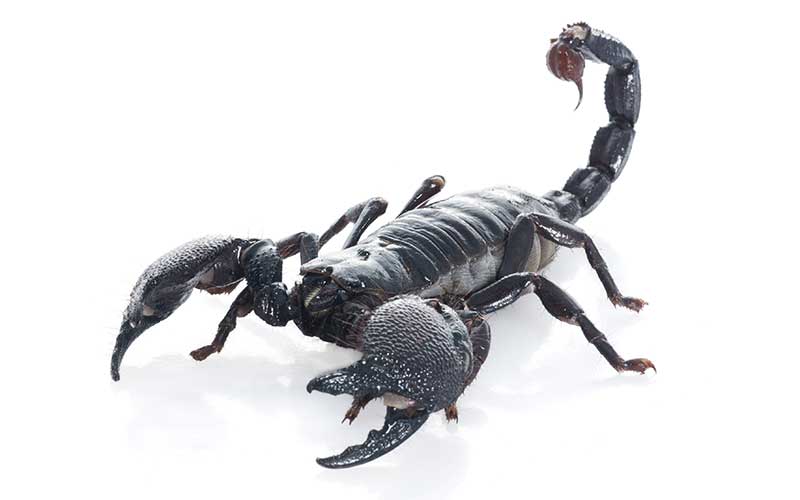Taxonomy and Evolution of Scorpions
Taxonomy
To study scorpions, we must know their scientific classification. They form part of the arthropods (phylum Arthropoda), a group which includes invertebrates with an external skeleton and articulated appendages.
Due to the vast diversity of arthropods, they classify into five subphylum, and one of them is Chelicerata, which includes the arthropods with bodies covered by a cuticle made of proteins and anatomies that have two sections: Cephalothorax and abdomen.
The subphylum Chelicerata splits into three classes, Arachnida
Pycnogonida and Merostomataone being the best-known Arachnida.
The inclusion of sea spiders or pycnogonids (Pycnogonida) to the subphylum Chelicerata has caused disagreements within the scientific community, who have also questioned the position of scorpions within their taxonomic classification. Any change would lead to a new family structure and an update of all the documentation that we have to date because for many years scorpions have been considered the most primitive arachnids that are known.
The arachnid class has more than 100,000 species including scorpions, spiders, ticks and other types of small creatures not appreciated by humans.
The arachnids split into 14 orders, which include extinct and living animals, being the Scorpions one of the 11 that still survive to this day. Subsequently, from the scorpion’s order, split new suborders, superfamilies, families, genera, and species that give as a result the 2,000 species of scorpions that approximately exist in the world.
Evolution
Several scorpion fossils exist which help their study, since their conservation in amber (fossilized plant resin), as well as in estuarine and marine deposits, preserve them pretty well. And from them, scientists have been able to structure similarities between members of the same order and clarify interrogations about their evolutionary process.
According to scientific analysis, the Chelicerata evolved from marine organisms that populated the Earth approximately 445 million years ago. These affirmations come from the evidence of more than 100 scorpion fossils found, some of them as old as 430 million years, which was the time of the Silurian period when also appeared the first cartilaginous fish, ancestors of the sharks.
The Scorpions are related to the Eurypterus, extinct aquatic creatures known as marine scorpions that lived millions of years ago in the Paleozoic era and were more than 240 species. Apparently, they have very similar features, and some Eurypterus may have managed to adapt to the terrestrial life, although many researchers think that they do not relate with the modern scorpions.
Alternate theories suggested that there was a key ancestor that separated the scorpions from other arachnids and provided them with unique characteristics, such the reproductive features because all scorpions are viviparous while spiders and other arachnids carry out this process through the production of eggs or other spherical silk bodies. Therefore, such variation must come from a key ancestor that remains in mystery.
While the investigations continue to clarify doubts about their taxonomy, the current classification of scorpions is the presented above which either way, they have prehistoric ancestors with much evolutionary history.







